
American white pelicans are waterbirds of immense size, white body, and black wing tips and partial trailing edge; the skin of legs and pouch and the huge bill are yellow to orange. Breeding adults have a vertical flat plate on the bill’s upper edge that is used in courtship and territorial establishment interactions; adults lose the plates after eggs are laid. Fall birds should lack this feature and have paler yellow bills. Call a hoarse grunt. In flight pelicans may either flap their wings or soar. They typically fly with their heads back on their body, not with necks extended. Large flocks flap and soar as they circle higher and higher. At a considerable altitude, they may veer off in one direction as a single-line or V-shaped pattern.
Similar species: Pelicans flying in formation may be confused with the much smaller snow goose, which usually migrates earlier in February and March. Snow geese have small heads and are black-feathered only on the tip of the wing.
Length: 62 inches (tip of bill to tip of tail); wingspan: 108 inches.

Statewide.
Habitat and Conservation
Common transient on large lakes, reservoirs, and marshes. Nonbreeding birds may linger during summer. May rarely occur on open water in winter. Arrive in late March, peak in mid-April, and depart by late May. Return again in mid-August, peak in mid-to late September, and depart by mid-November. During migration, pelicans may be seen flying in formation high in the air over many parts the state. Many more American white pelicans migrate through the western half of Missouri than the eastern half.
Food
White pelicans hunt in shallow waters such as marshes, dipping their heads under the surface to scoop up fish, plus crayfish, tadpole, and other aquatic animals. Groups of pelicans sometimes form circles and hunt cooperatively, herding fish into a concentrated pack. Unlike brown pelicans, they do not dive into water from flight to catch fish.
Status
Common transient in the west, uncommon in the east; rare visitor in summer and winter.
Life Cycle
American white pelicans don’t breed in Missouri. We see them as they migrate through in spring and fall. Breeding range is from eastern Colorado north into Canada’s Northwest Territories and from the Dakotas to Northern California. They are colony nesters and nest in shallow depressions on the ground. Usually 2 or 3 eggs are laid on gravel or sand. They generally do not tolerate human presence near their nesting grounds. Their winter territory begins just south of Missouri.
Human Connections
Like other fish-eating birds, pelicans were long persecuted by people, though they rarely compete with us for game fish. In midcentury, pesticides also decreased populations. Outlawing DDT and creating wild-bird reservations in their breeding territories helped save this bird from extinction.
Ecosystem Connections
Ground-nesting birds, and their eggs young, are especially vulnerable to predation. Nesting in large colonies, and on islands, helps decrease such losses. As predators, pelicans help to control populations of fish and other aquatic animals.

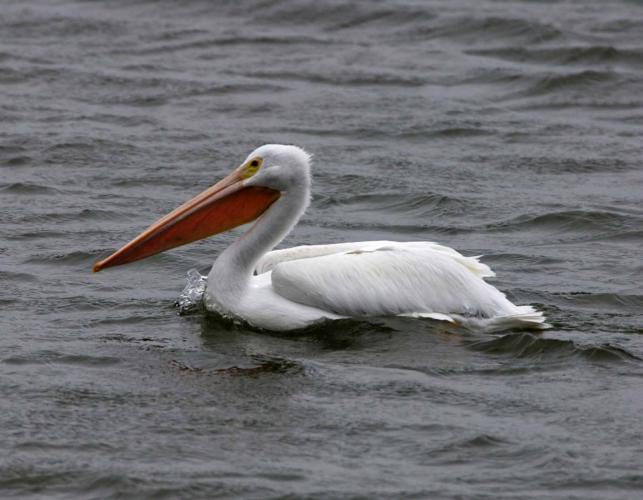




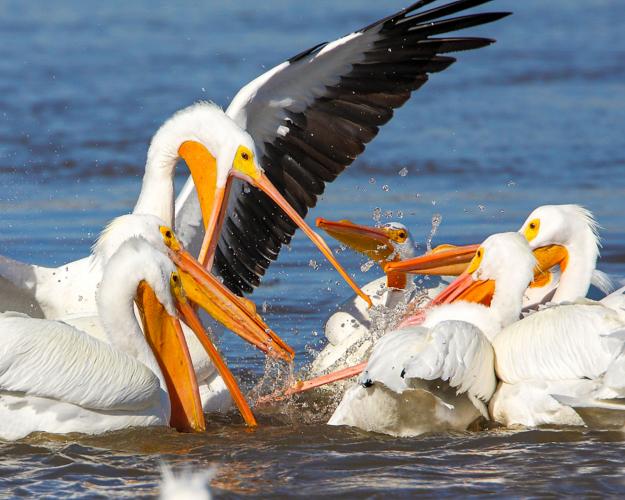

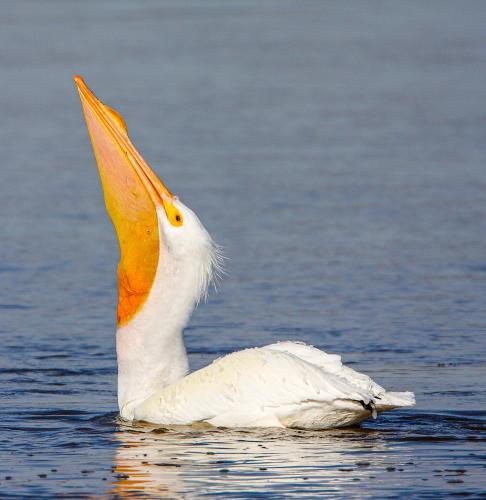

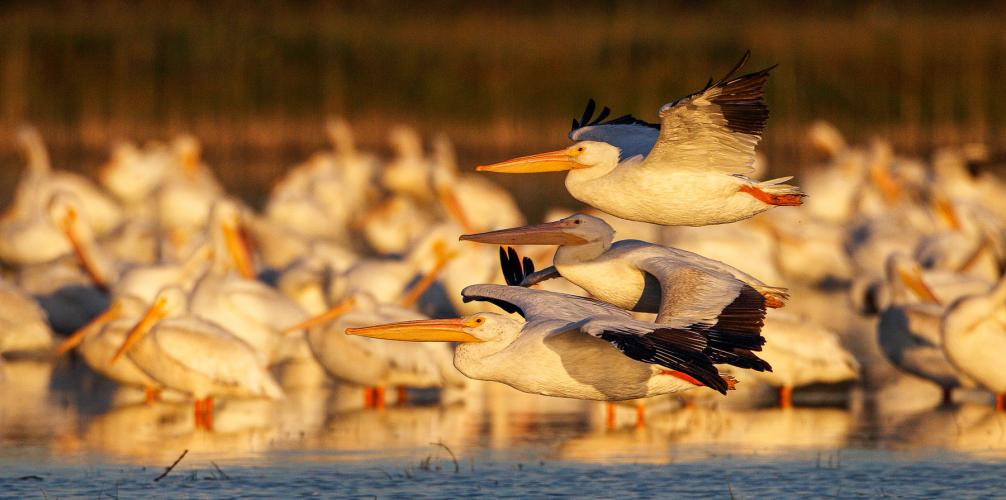



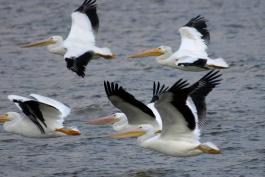


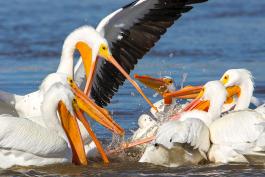


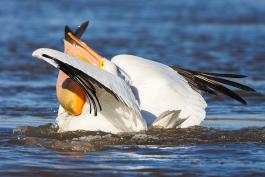

Where to See Species
About 350 species of birds are likely to be seen in Missouri, though nearly 400 have been recorded within our borders. Most people know a bird when they see one — it has feathers, wings, and a bill. Birds are warm-blooded, and most species can fly. Many migrate hundreds or thousands of miles. Birds lay hard-shelled eggs (often in a nest), and the parents care for the young. Many communicate with songs and calls.


























